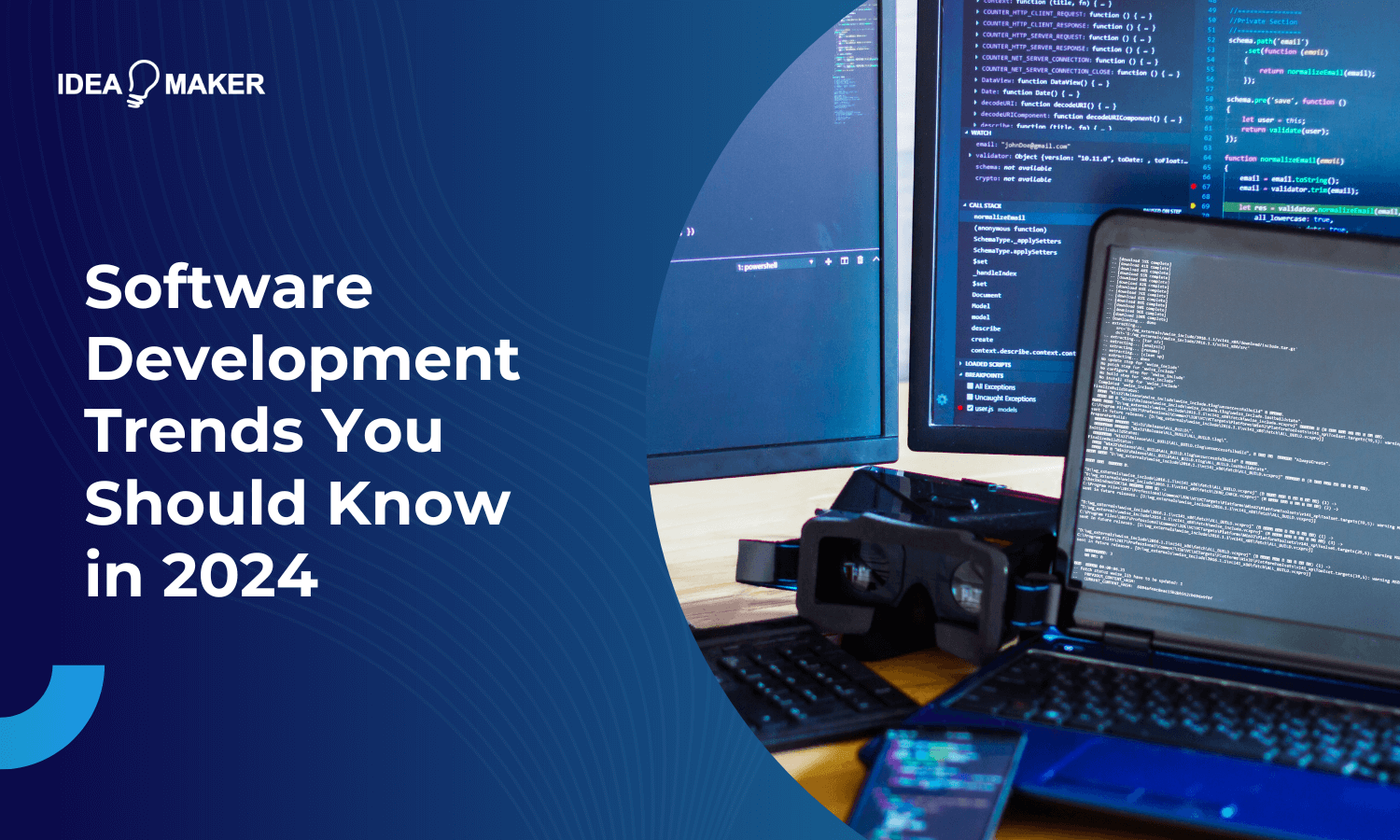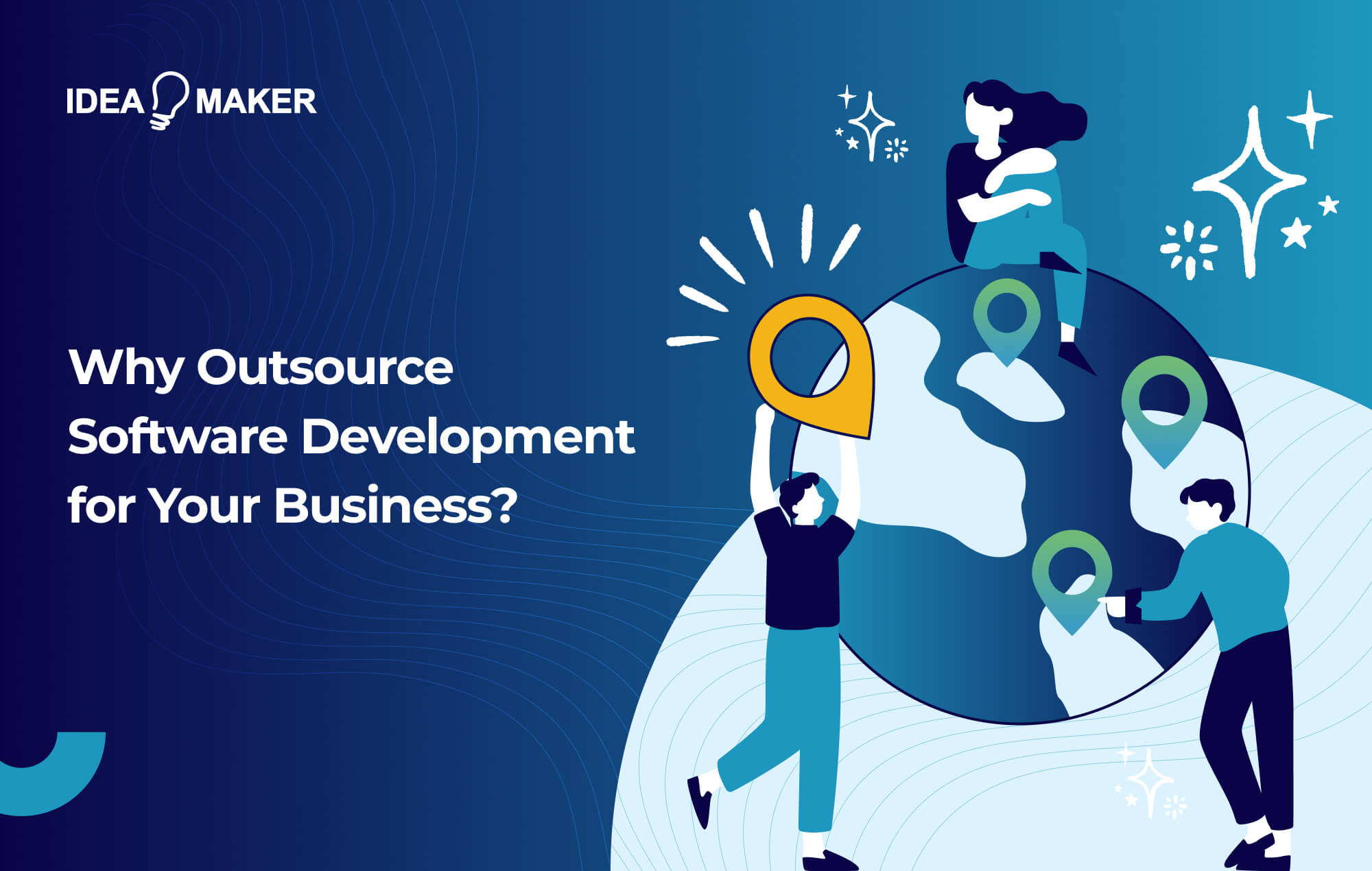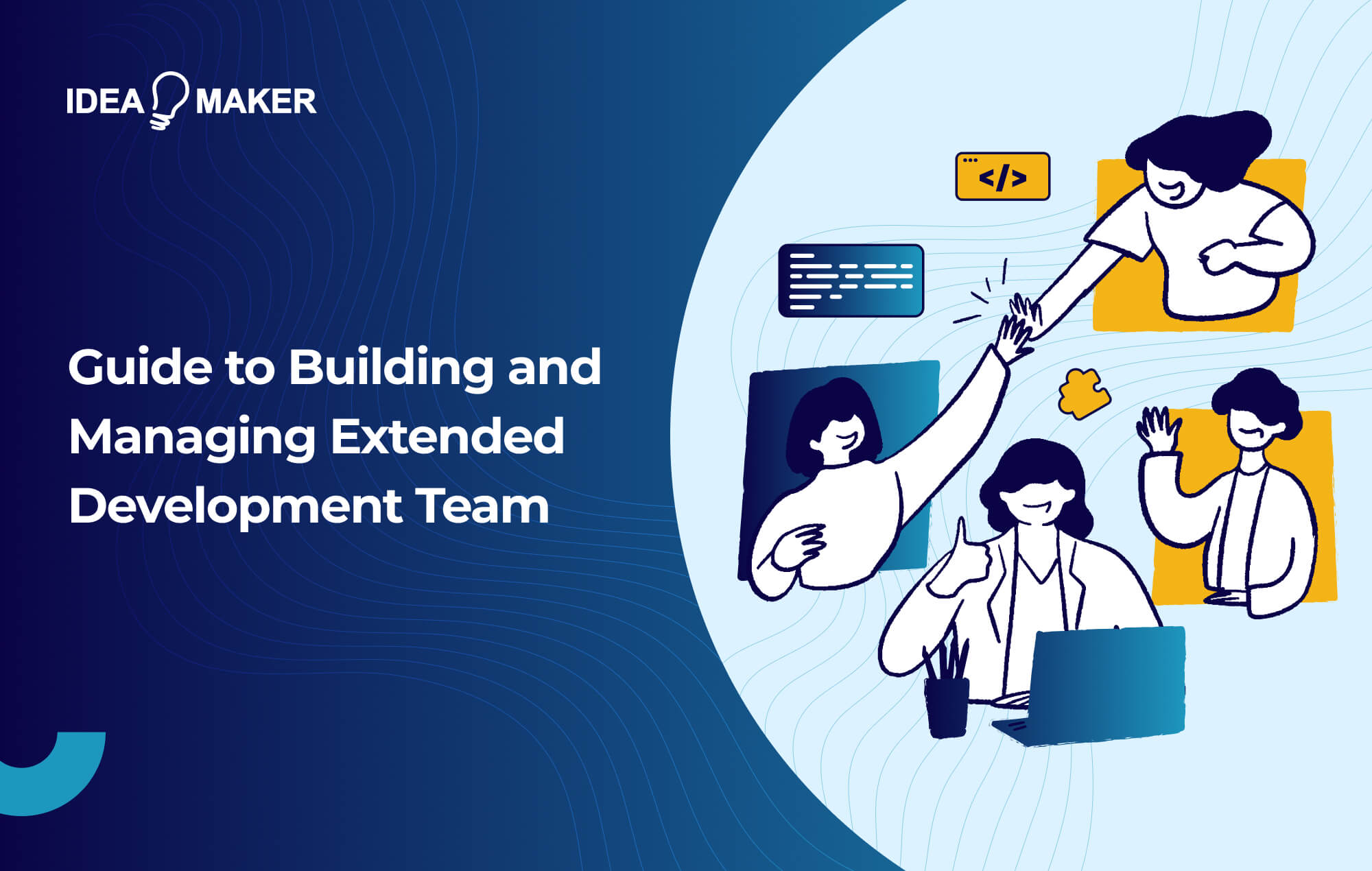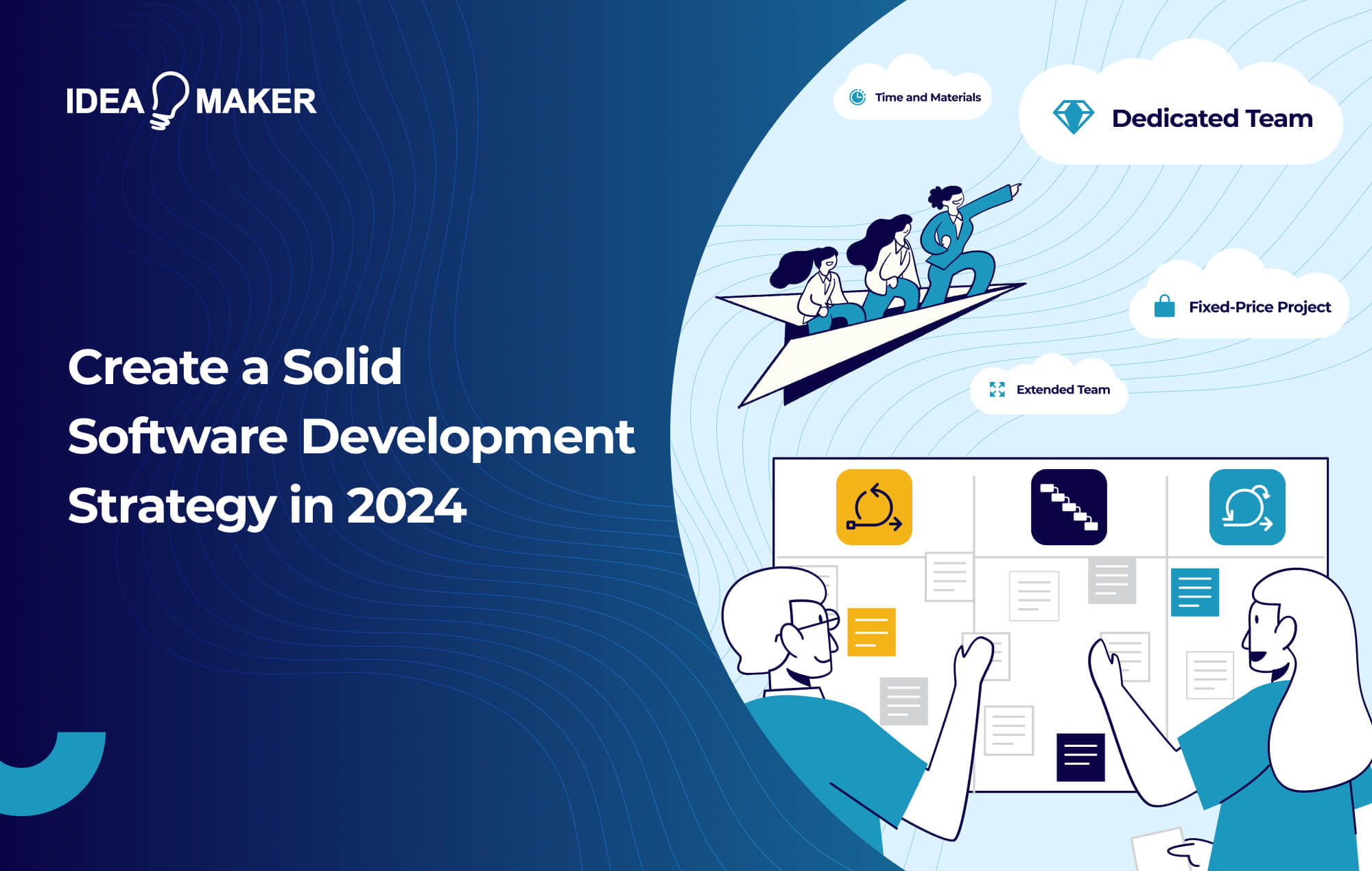Table of Contents
With a surge of new technologies and methodologies reshaping the way we approach software solutions each year, the development industry is a dynamic landscape where change is the only constant. For business leaders, staying informed is the key to unlocking cutting-edge solutions, as having the right software often provides the crucial advantage needed to outshine the competition.
This article delves into the top custom software development trends that tech decision-makers, businesses, and organizations should embrace to harness the innovations of 2024, and ultimately gain a competitive edge.
Chatbots and Virtual Assistants
More and more websites and apps today use chatbots and virtual assistants to engage their users. In fact, according to a Juniper Research report, the number of consumer chatbots across global markets will reach over 4.5 billion by 2024 — a fourfold increase from 2019.
To say that today’s AI chatbots are revolutionizing how people interact with software would be an understatement. These intelligent chatbots, which use natural language processing (NLP) and machine learning to understand and mimic human language, offer more value than the static chatbots of the previous generation due to the many benefits they bring, including streamlined workflows, reduced human resource overheads, and 24/7 automated customer support.
With these powerful capabilities, businesses can successfully enhance employee training, boost productivity, improve customer satisfaction, minimize operational costs, and increase conversion rates. Chatbot capabilities also become more advanced and refined over time, thanks to continuous training through customer conversations.
Consequently, one of the top custom software development trends we will see more of in 2024 is the integration of AI chatbots in custom-made software. As AI technology continues to expand, the swift adoption of virtual assistants is imperative for organizations of the future.
Cloud Computing
With the shift toward remote work and decentralized teams, the use of cloud-based software has skyrocketed. This type of software, which includes prominent names like Amazon Web Services, Microsoft Azure, and the Google Cloud Platform, offers businesses greater flexibility, cost savings, streamlined scaling, robust data security, and hassle-free operations.
For example, Flexera’s 2021 State of Cloud Report highlights that enterprises leveraging cloud services increased their spending by as much as 50% in only 24 months. Additionally, a Nutanix Enterprise Cloud Index survey carried out between December 2022 and January 2023, revealed that the use of hybrid cloud and multi-cloud approaches will grow substantially in 2024. This is because the technology enables decision-makers to maximize agility, optimize the total cost of ownership (TCO), and drive innovation.
In light of these studies, the future undoubtedly points toward increased migration of infrastructure, platforms, software, and workloads into the cloud for both cost and operational efficiencies.
Artificial Intelligence and Machine Learning
In 2023, artificial intelligence and machine learning have moved beyond hype to prove real-world value across sectors. Pioneering efforts, such as ChatGPT, have played a crucial role in demystifying the benefits of AI for the everyday person, heralding an era in which widespread adoption is inevitable.
These technologies are now reshaping processes from supply chains to manufacturing floors, facilitating predictive analytics, delivering personalized experiences, and driving data-driven decision-making. In addition to chatbots, AI and machine learning can be used in a variety of ways, including defect detection, demand forecasting, dynamic pricing, predictive maintenance, and algorithmic trading.
Machine learning algorithms will only continue to get smarter throughout the course of the year, leveraging vast datasets to uncover actionable insights without explicit programming. And, with global AI software revenue expected to reach $126 billion by 2025, business leaders in 2024 must actively look at AI/ML integration and customizable solutions in order to accelerate growth.
Internet of Things (IoT)
The Internet of Things is orchestrating the fusion of operational and information technology, creating a seamless network of interconnected devices and sensors. These sophisticated instruments tirelessly gather field data and enable centralized monitoring, analytics, and control, ultimately elevating efficiency, convenience, and decision-making.
This is because IoT technology essentially creates a digital twin of the physical environment by assimilating real-time data through embedded sensors in machines, vehicles, and buildings. The insights generated via IoT analytics can then be used to help businesses minimize costs, reduce risks, and transform their operations.
As we ride the wave of technological progress, marked by AI advancements, a twofold increase in data bandwidth, and the rapid evolution of processors, the IoT industry is on the brink of a remarkable surge in 2024. While it’s presently valued at around $800 billion, the IoT market is on track to soar to nearly $1.1 trillion, boasting a robust compound annual growth rate (CAGR) of 13% by the close of the year. Projections also indicate sustained year-over-year growth in revenue until 2030, proving that IoT adoption is vital for businesses looking to gain operational visibility and a competitive edge moving forward.
Low-Code and No-Code Platforms
Low-code/no-code app development platforms enable rapid digital transformation for organizations without intensive programming. These visually intuitive platforms utilize drag-and-drop components to build, test, and deploy solutions up to five times faster, empowering staff and stakeholders to bridge skill gaps traditionally filled by developer teams.
With low-code tools expected to drive over 65% of application development in 2024, this custom software development trend is poised to have a profound impact for many years to come. In fact, the low-code development market is projected to generate a staggering $187 billion by 2030. As a result, forward-thinking businesses are urged to take advantage of low-code platforms this year to create custom solutions that reduce their IT dependency, increase productivity, and accelerate digitization.
Blockchain Technology
Blockchain enables decentralized, distributed public ledgers to record transactions and data immutably without centralized control. Thanks to its innate security, transparency, and accuracy, multiple sectors are already leveraging blockchain technology for supply chain tracking, authentication of products, and digital payments.
However, in the years ahead, the programmable functionality of blockchain through self-executing smart contracts will likely gain even more use cases, including automated supply chain workflows, machine-to-machine micropayments, tokenization of assets, self-sovereign identity management systems, and decentralization of data platforms.
As such, technology executives in 2024 need to actively assess decentralized ledger solutions to enhance traceability, security, payments, and data sharing across organizational boundaries. Pairing IoT data with tamper-proof blockchain platforms, for instance, can effectively transform workflows through embedded automation, security, and accountability.
DevOps Services
The DevOps software development methodology integrates the tasks performed by development and operations teams to improve collaboration, productivity, and agility. By eliminating cross-team silos and bottlenecks, DevOps enables continuous development, testing, integration, and deployment of software applications to end users, making it integral to today’s IT environments. In fact, due to rising demand, global DevOps spending is predicted to reach nearly $15 billion by 2025.
Made possible by upskilled, vertically integrated teams, as well as robust communication and a supportive culture, DevOps ultimately delivers superior software release velocity, dependability, and business continuity. As a result, technology leaders should adopt DevOps strategies comprising infrastructure automation, CI/CD pipelines, and configuration management to fuel rapid innovation aligned to customer needs in 2024.
Single-Page Applications (SPAs)
Unlocking seamless user experiences, Single-Page Applications (SPAs) redefine the digital landscape by dynamically updating a single webpage instead of navigating through multiple pages. This approach not only ensures speed and responsiveness, it also proves more cost-effective compared to traditional multi-page apps.
SPAs harness the power of browser caching, AJAX, HTML5, and advanced JavaScript frameworks like React, Angular, and Vue.js to inject updated content into the existing Document Object Model (DOM) to create a fluid and uninterrupted user journey. Esteemed digital giants like Facebook, Google Maps, GitHub, and Gmail rely on SPA techniques to deliver effortlessly smooth navigation experiences, eliminating the need for full page reloads.
For tech leaders with a keen eye on custom software development trends, embracing SPA practices through skilled JavaScript developers holds the promise of lightning-fast experiences and heightened customer engagement. By staying abreast of these trends, forward-thinking executives can propel their organizations toward digital excellence and stand out amongst the competition.
Embracing Web 3.0
Web 3.0 represents the next phase of the internet’s evolution to semantically connected data using AI, decentralized apps, and virtual worlds. While still in its infancy, Web 3.0 will transform how businesses share and monetize online data through open, trusted ecosystems. According to Allied Market Research, the global Web 3.0 technology market will reach $81.5 billion by 2030, underlining its strong growth trajectory.
Technology leaders in 2024 will need to track Web 3.0 advancements in terms of decentralized storage, micropayments, NFT marketplaces, the metaverse, and intelligent voice-enabled interfaces. Testing integrations with emerging data exchange protocols using blockchain and token-based incentives should also be on the radar. Looking ahead, the next business revolution will likely arise from leveraging read-write-own web capabilities for customers rather than centralized data ownership.
Progressive Web Applications (PWAs)
Progressive web apps integrate the experience of native mobile apps with the accessibility and SEO advantages of websites. PWAs load seamlessly across devices and even offline, similar to an installed native app. Due to their frictionless delivery, PWAs are forecasted to account for over 58% of mobile web traffic globally in 2024.
For technology executives, PWAs represent a budget-friendly alternative to hybrid mobile development, facilitating robust push notifications, contactless payments, and other app-like functionalities with a single underlying codebase. As the world goes mobile, this may just emerge as the most impactful custom software development trend of the year. In fact, Google has already voiced plans to make PWAs the default applications on Android devices.
Voice-Enabled Applications
With the proliferation of voice-based interface devices like Alexa and Google Home in recent years, the landscape of human-computer interaction has witnessed a transformative shift. In 2024, this evolution will reach new heights with the ascent of AI-enabled voice-based chat assistants that are capable of processing human speech using advanced natural language processing (NLP).
AI-powered chat assistants seamlessly interact with large language models (LLMs) to provide intelligent and contextually relevant answers. As a result, the emergence of service-specific voice assistants will diversify the voice-enabled application space, catering to specialized user needs. Business leaders attuned to the pulse of customer expectations must recognize the surging demand for voice capabilities in 2024.
After all, integrating solutions like conversational chatbots, voice search optimization, and audio-based user interfaces (UIs) through voice AI platforms is not just a choice but a strategic imperative in the current trajectory.
The Importance of Adapting to These Trends for Future Success
The technological shifts in the software landscape underline the necessity for technology decision-makers to embrace change rather than avoid it. Cloud, IoT, blockchain, AI, and low-code solutions have clearly demonstrated significant returns through revenue gains, cost savings, and new product offerings, and are poised to shape organizational strategies over the next five years.
Managers who postpone adoption to later years risk ceding first-mover advantages to the competition. On the other hand, pioneering leaders in these domains have reported double-digit improvements in customer experience, employee productivity, and bottom line growth.
Therefore, technology executives must shake off fear or skepticism regarding emerging tech. By taking a solutions-first approach that’s focused on clear business goals, they can future-proof innovation for sustainable growth beyond 2024.
Stay Up to Date With Idea Maker
This quick roundup provides a snapshot of the software development trends that will impact IT strategy and planning over the next few years. However, exploring tailored solutions to keep your organization at the competitive forefront requires an expert technology partner.
This is where Idea Maker steps in. As a leading software agency, we offer specialized expertise across cutting-edge technology implementations, including design, AI integration, and custom software development. Our design and development professionals seamlessly deliver software innovation and digital transformation, perfectly aligned to your vision.
Schedule a free consultation with us today to learn more about how you can get started future-proofing your tech capabilities in 2024.




